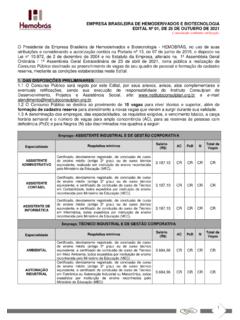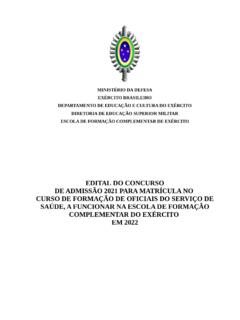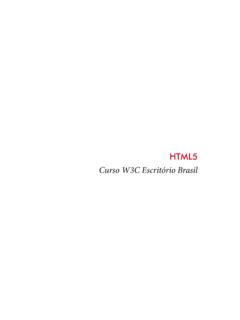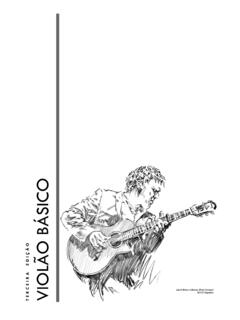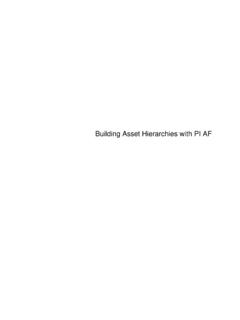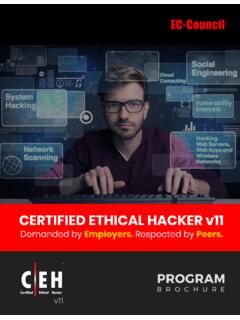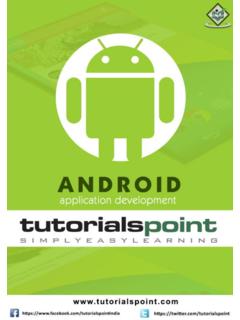Transcription of Introduction to Mathematical Thinking - UFRGS
1 Introduction toMathematical ThinkingKeith Devlin Keith Devlin, 2012 Publisher:Keith Devlin331 Poe St, Unit 4 Palo Alto, CA 94301 Keith Devlin, 2012 All rights reserved. No part of the material protected by this copyright notice may bereproduced or utilized in any form, electronic or mechanical, including photocopying,recording, or by any information storage and retrieval system, without writtenpermission of the copyright owner. Publication dataDevlin, Keith, Introduction to Mathematical ThinkingFirst published, July 2012 ISBN-13: 978-0615653631 ISBN-10: 0615653634 ContentsPrefaceWhat this book is about1 What is mathematics? More than Mathematical Modern college-level Why do you have to learn this stuff?2 Getting precise about Mathematical The logical combinators and, or, and Quantifiers3 What is a proof?
2 Proof by Proving Proving quantified Induction proofs4 Proving results about The The real SequencesAPPENDIX: Set theoryIndexPrefaceMany students encounter difficulty going from high school math to college-levelmathematics. Even if they do well at math in school, most students are knocked offcourse for a while by the shift in emphasis from the K-12 focus on masteringprocedures to the Mathematical Thinking characteristic of much universitymathematics. Though the majority survive the transition, many do not, and leavemathematics for some other major (possibly outside the sciences or othermathematically-dependent subjects). To help incoming students make the shift,colleges and universities often have a transition course.
3 This short book is written to accompany such a course, but it is not a traditional transition textbook. Rather than give beginning college students (and advanced highschool seniors) a crash course in Mathematical logic, formal proofs, some set theory,and a bit of elementary number theory and elementary real analysis, as is commonlydone, I attempt to help students develop that crucial but elusive ability: mathematicalthinking. This is not the same as doing math, which usually involves the applicationof procedures and some heavy-duty symbolic manipulations. Mathematical Thinking ,by contrast, is a specific way of Thinking about things in the world. It does not have tobe about mathematics at all, though I would argue that certain parts of mathematicsprovide the ideal contexts for learning how to think that way, and in this book I willconcentrate my attention on those , scientists, and engineers need to do math.
4 But for life in thetwenty-first century, everyone benefits from being able to think mathematically tosome extent. ( Mathematical Thinking includes logical and analytic Thinking as well asquantitative reasoning, all crucial abilities.) This is why I have tried to make this bookaccessible to anyone who wants or needs to extend and improve their analyticthinking skills. For the student who goes beyond a basic grasp of logical and analyticthinking, and truly masters Mathematical Thinking , there is a payoff at least equal tothose advantages incidental to twenty-first century citizenship: mathematics goes frombeing confusing, frustrating, and at times seemingly impossible, to making sense andbeing hard but developed one of the first college transition courses in the late 1970s, when I wasteaching at the University of Lancaster in England, and I wrote one of the firsttransition textbooks, Sets, Functions and Logic, which was published in , when I give such a course, I structure it differently, giving it the broader focusof Mathematical Thinking , and likewise this book is different from my earlier I understand the rationale behind the more familiar transition courses andtextbooks, the course I give today, and along with it this book, seek to serve a muchwider audience.
5 (In particular, I no longer devote time to formal, Mathematical logic provides a useful model of Mathematical reasoning which is the reasonit was developed in the first place I no longer think it is the best way to developpractical, logical reasoning skills.) In adopting this broader, societal perspective, Ibelieve my course and this book will not only still help beginning college anduniversity mathematics students successfully negotiate the transition from high school,it will also help anyone develop better reasoning some reason, transition course textbooks are generally hugely expensive, insome cases over $100, which is a lot for a book that likely will be used for at most onesemester. This book is designed to accompany transition courses that last only five toseven weeks.
6 For that reason, I decided to self-publish it as a low-cost, print-on-demand book. I did however engage an experienced, professional mathematicstextbook editor, Joshua D. Fisher, to go over my entire manuscript prior topublication. The final form of the book owes a lot to his expertise, and for that I amvery DevlinStanford UniversityJuly 2012 What this book is aboutDear reader,I wrote this book with two kinds of reader in mind: (1) the high school graduateentering college or university who wants to (or could) major in mathematics or somemath-dependent subject and (2) anyone who, for whatever reason, wants or needs todevelop or improve their analytic Thinking skills. Regardless, the focus is on learningto think a certain (very powerful) won t learn any Mathematical procedures from this book, nor will you have toapply any!
7 Though the final chapter focuses on numbers (elementary number theoryand the basics of real analysis), the amount of traditional Mathematical material Icover on those topics is tiny. The last chapter simply provides excellent examples thathave helped mathematicians themselves develop, over time, the analytic Thinking skillsI shall describe throughout this the nineteenth century, the need for those analytic Thinking skills among thewider, general population grew with increasing democratization and flattening ofsociety, which gave and continue to give every citizen more and more freedomand opportunities to play a significant, self-directed role in business or society. Today,more than ever, good analytic Thinking skills are essential for anyone who wants totake full advantage of the opportunities for self-growth and advancement thatcontemporary democratic societies have been teaching and writing books about the patterns of Thinking required tosucceed in college-level3 (pure) mathematics for several decades.
8 Yet, it was only inthe last fifteen years, as I found myself doing a fair amount of consulting work withindustry and government, that I heard first hand that the Mathematical thinkingskills that were the focus of those courses and books were exactly what business andgovernment leaders said they valued most in many of their employees. Rarely would aCEO or the head of a government lab say that they wanted people with specific skills;rather, their need was for people who had good analytic Thinking skills and were ableto acquire new specific skills when a consequence of the ideas borne out of these divergent, though obviouslyinterconnected experiences in academia and business in writing this new book Ihave, for the first time, tried to structure the development in a way that makes itaccessible to a wide that said, the remainder of this Introduction is directed primarily at theentering (or about-to-enter) college student faced with having to take some (pure)mathematics courses.
9 For the more general reader, the value of what I will say is thatthe Mathematical Thinking skills required to master modern pure mathematics areprecisely the crucial mental abilities required to succeed in many professions andwalks of life, as I just discussed.* * *Dear student,As you are about to discover, the transition from high school mathematics tocollege-level (pure) abstract mathematics is a difficult one. Not because themathematics gets harder. Those students who have successfully made the transitionwill likely agree that college math feels in many ways easier. What causes the problemfor many as I mentioned above is only the change in emphasis. In high school, thefocus is primarily on mastering procedures to solve various kinds of problems.
10 Thisgives the process of learning very much a flavor of reading and absorbing the recipesof a kind of Mathematical cookbook. At college, the focus is on learning to think in adifferent, specific way to think like a mathematician.(Actually, this is not true of all college math courses. Those courses designed forscience and engineering students are often very much in the same vein as the calculuscourses that typically form the pinnacle of high school mathematics. It s the coursesthat compose the bulk of the mathematics major that are different. Since some ofthose courses are usually required for more advanced work in science andengineering, students in those disciplines also may find themselves faced with this different kind of math.)
